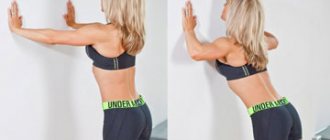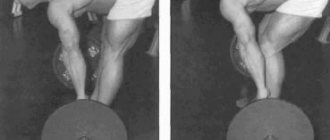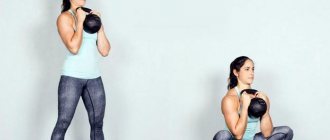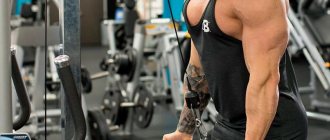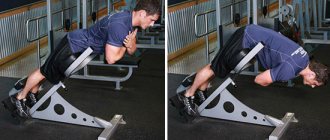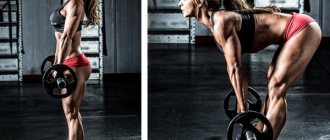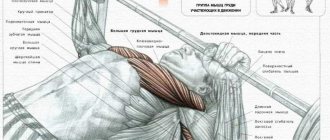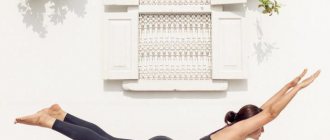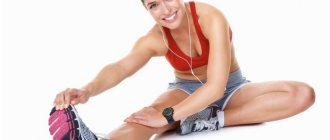— Advertising —
When it comes to popular health methods, Pilates, yoga and the classic treadmill get the most attention. However, there is a more humble workout that may not be as widely celebrated, but still has all the benefits: walking.
Certified fitness trainer Jolynn Baca Jaeckel explains, “I love walking because it is accessible to anyone at any age or fitness level. Plus, it's good for your heart, your head and your wallet. ».
A recent report from charities Ramblers and Macmillian Cancer Support, Walking Works (PDF), highlights the health benefits of taking a short walk. The report found that regular walking, replacing the 150 minutes of moderate exercise each week recommended by the UK's chief medical officer, could save 37,000 lives a year. It could also reduce the incidence of type 2 diabetes by 300,000 people.
In some cases, walking can be more effective than running. Scientists at the Lawrence Berkeley National Laboratory in California found that brisk walking reduced the risk of heart disease more effectively than running. They followed participants aged 18 to 80 for six years and found that walking reduced the risk of heart disease by 9.3%, and running by 4.5%.
And there's even better news: 30 minutes of brisk walking a day for five days can help you sleep better, according to research from Oregon State University. A university study found that walking helped participants sleep better and feel more alert during the day.
And if that's not enough to convince you to get up from your desk right now and go for a walk, then perhaps the following will spur you into action...
How does it affect the body and male power?
To maintain the normal functioning of almost all systems and organs, a person just needs to eat well and lead an active lifestyle. Everyone knows the benefits of walking for men, in particular, for the normal functioning of the genital organs, since sedentary behavior today is the most common cause of sexual disorders in men of all ages.
For many men for whom physical activity and sports are contraindicated, walking is an excellent alternative for therapeutic and preventive purposes. Yes, if you look carefully, any sport involves walking, including physical therapy to stimulate potency. To understand the feasibility of this method of increasing sexual activity, it is worth taking a closer look at how walking is beneficial for a man’s body.
Walking's Most Valuable Contribution
Before determining how walking is beneficial for the male reproductive system, it is worth considering its benefits in general for the entire body.
IT IS IMPORTANT TO KNOW! A real way to enlarge your penis by +7 centimeters! Read more >>>
There are a number of disorders and diseases for which walking is simply necessary , namely:
- Stress . It has been scientifically proven that walking in the fresh air perfectly relieves stress and distracts a person from worries and worries. This is due to the release of chemical components of the brain, as well as the production of endorphins, which relax a person and even relieve pain.
- Diabetes mellitus type 2 . It has been scientifically proven that the development of diabetes mellitus of this type can be prevented by 60% by walking for 150 minutes every week. Walking improves glucose absorption and also burns fat and helps the body improve insulin sensitivity.
- Depressive states . Walking for half an hour can relieve symptoms of depression, as well as significantly improve mental and physical activity, as it changes the amount of serotonin in the brain.
- Obesity . Walking is the best option for weight loss for men, as this type of mobility has high anaerobic activity to eliminate calories. In addition, walking improves blood circulation and controls weight.
- High cholesterol levels . It is known that cholesterol reduces the elasticity and flexibility of blood vessels, and also impairs blood flow. Walking not only destroys cholesterol, it contributes to the normal functioning of the heart and blood vessels, oxygen supply and saturation of the body with important substances.
- Glaucoma . Doctors also found that daily walks in the fresh air prevent the development of glaucoma by almost 100%.
- Diseases of joints and bones . Mobility and activity of a person allows him to prevent such serious diseases as arthritis, rheumatism and osteoporosis.
It is also known that active and regular walking helps improve blood circulation throughout the body, including in the genital area. This helps a man prevent problems with erection, low libido and potency, as well as congestion and inflammation of the prostate. And strong muscles in the pelvic area prevent such a typical problem among young men today as premature ejaculation.
Walking pulse
Pulse control is very important during any physical activity, and such a therapeutic and health-improving method as dosed walking is no exception. Counting your pulse before, during and after a walk helps to assess the adequacy of the chosen load, the body’s readiness for this kind of training and the functional state of the cardiovascular system. It is recommended to count your heart rate (HR) every 0.5-1.0 km.
Heart rate norms are individual and depend on many factors (the state of the nervous system, the efficiency of the heart, the initial physical fitness of the patient). On average, after a walk, the heart rate increases by 10-20 beats per minute. It should return to normal in no more than 10 minutes.
Heart rate rates directly during training can be approximately estimated according to the following scheme:
- Very slow tempo – up to 85 beats per minute;
- Slow – 85-95 beats per minute;
- Average – 95-120 beats per minute;
- Fast - 120-130 beats per minute;
- Very fast - 130-150 beats per minute.
Important!
If the pulse during the period of exercise becomes more than 150 beats per minute, then its intensity must be reduced.
At rest, the heart rate is 60-80 beats per minute. At the same time, it is necessary to take into account that in athletes and patients taking certain medications, it slows down, and in a number of diseases of the heart, respiratory system and endocrine glands, on the contrary, it accelerates.
Note!
If there is a heart rhythm disorder such as atrial fibrillation, the pulse measured in the radial arteries may be less than the actual heart rate. With this diagnosis, heart rate is calculated by placing the palm directly on the chest.
How long should you walk?
In the modern world of technology and automobile transport, the average person walks about 3,000 steps a day. Doctors focus on how little a modern person moves, unaware of the dangers of low mobility and a sedentary lifestyle. Hiking is not only an active sport and a way to increase the physical capabilities of the body, it is also an excellent source of oxygen, without which the body is not able to absorb nutrients from food.
It has been scientifically established that on average every person should take at least 10,000 steps a day. If you count the steps in equivalent distance, it is approximately 7.5 km.
Who is better off walking than running?
Running is a serious load, so for some categories of people it is better to engage in race walking to improve their health:
- After 35 years, if the person has not practiced any sports before. Physical education classes at school and university are not taken into account.
- For pathologies of the spine and orthopedic diseases.
- After a stroke or heart attack.
- Suffering from diabetes.
- Smokers with more than a year of experience.
- If you experience joint pain while running.
Running is not recommended for the groups of people listed above. They better walk.
Secrets of our muscles
Muscle strength that is constantly toned brings incredible results that are directly related to blood pressure and cholesterol levels. Osteochondrosis can be treated twice as quickly if our muscles work! But most men, to put it mildly, don’t care about all this data, as well as about their own health.
The statistics are inexorable. Ninety percent of men don't worry about preventing diseases, let alone treating them. Two months ago I came across Professor Bubnovsky’s book “The Code of Heart and Vascular Health.” He was interested in the method aimed against obesity and diabetes through physical activity.
I read it in one sitting and realized how wrong we are in many ways! It turns out that even mental activity has a connection with physical activity. When we walk, we tone the muscles of our legs, back, and arms. When walking quickly, our body receives more oxygen, supplies all blood vessels, strengthens the walls of muscle and bone tissue, and saves from impotence.
You may ask, why this excursion into anatomy? It's simple, friends! The activity of the artery, the rhythm of the heart and its uninterrupted operation depend on how our muscles are developed. This organ gives us everything: high-quality endorphins, the production of the proper amount of serotonin and high reproductive results.
Text of the book “Walking Instead of Medicines”
Evgeniy Milner Walking instead of medicine
Introduction
The book by Evgeny Milner, Candidate of Medical Sciences, Associate Professor of the Department of Biological Disciplines of the Smolensk State Academy of Physical Culture, Sports and Tourism, Honored Worker of Physical Culture of the Russian Federation “Walking and Health” is the logical conclusion of the series of his publications devoted to the health training of middle-aged and elderly people, the study of which He worked for more than 30 years as a senior coach of the Smolensk health walking and running club “Nadezhda”.
And these books were very popular: “I Choose Running,” published in a million copies in the USSR, sold out within a month, “Man and Running” was published in the USA. The author himself, over the course of these three decades, went through the path of mastering aerobic exercises, starting from walking, up to marathon running, and ending with it, he returned to walking again, but no longer slow, as in the beginning, but fast, almost sporty, and even equipped with a ski shoe. with a stick, and sometimes with two – the latest European innovation in “aerobics”. Evgeniy Grigorievich talks about this and much more in an accessible and fascinating way. And it is very important that this is not only his personal experience, but the results of scientific research conducted on a large group of people, supported by data from world-famous scientists such as K. Cooper, E.I. Chazov, N.M. Amosov and many others. Consistently and in sufficient detail, the physiological foundations of the concept of “health”, modern methods of its quantitative assessment and the foundations of health-improving training, its methods and means, especially for people of mature and elderly age (over 35-40 years old) are presented. The most effective method of mastering health-improving (accelerated) walking, which was used in the Nadezhda club, and its effect on the human body are described in detail. Of significant interest is the section “Walking and Diseases,” which describes the features of walking for various diseases. The book is decorated with illustrations (examples) from the author’s own experience of working with patients. Original exercises for the prevention of spinal osteochondrosis, described in the chapter “Acyclic exercises,” are advisable to use not only in classes with middle-aged and elderly people, but also in physical education classes at schools and universities.
The section on self-control describes in detail the most important and simple methods and tests for determining the functional state of the body, which will help to avoid possible mistakes when practicing aerobic exercises on your own.
E. Milner's book will be interesting and useful not only to a wide range of middle-aged and elderly people, but also to teachers and methodologists in health groups.
Honored Worker of Higher Education, Doctor of Medical Sciences, Professor of the Smolensk State Academy of Physical Culture, Sports and Tourism
Ilya Isaakovich Bakhrakh
LA VIA EST VITA! THE ROAD IS LIFE!
About the book
At the beginning of the book, the physiological foundations of the concept of “health”, modern methods of its quantitative assessment and the foundations of health-improving training, its methods and means, especially for mature and elderly people (over 35–40 years old), are presented consistently and in sufficient detail. The most effective method of mastering health-improving (accelerated) walking, which was used in the Nadezhda club, and its effect on the human body are described in detail. Of significant interest is the section “Walking and Diseases,” which describes the features of walking for various diseases. The book is decorated with examples from the author’s own experience of working with patients. Original exercises for the prevention of spinal osteochondrosis, described in the chapter “Acyclic exercises,” can be recommended for use not only in classes with middle-aged and elderly people, but also in physical education classes at schools and universities. The section on self-control describes in detail the most important and simple methods and tests for determining the functional state of the body, which will help to avoid possible mistakes when practicing aerobic exercises on your own.
Evgeniy Milner’s book will be interesting and useful not only to a wide range of readers interested in strengthening their health, but also to teachers and methodologists in health groups.
Honored Worker of Higher Education, Doctor of Medical Sciences, Professor of the Department of Sports Medicine of the Smolensk Academy of Physical Culture and Sports
Ilya Isakovich Bakhrakh
Chapter one speedwalking, or why do Americans walk and we don’t?
The one who walks will master the road
Really, why?! I will never forget the picture I saw on the beaches of Florida in the USA. Two thin chains of Americans vacationing in hotels stretched along the coast slowly moved towards each other from one hotel to another at a distance of about 500 m. This human chain formed a sort of oval and moved counterclockwise. The entire “landing” area of the huge beach, covered with small gray pebbles, was completely empty. "What are they doing?" – I was surprised. “They do speed walking, they walk,” the translator answered us. I remembered our Crimean resorts with beaches filled to capacity with the sweaty bodies of “savages”, close to each other, so that there was nowhere to walk, and - no movement! Everything is exactly like “theirs”, to the contrary! But the difference in cultural traditions did not stop there. When I tried to change clothes after swimming behind a wide column of the hotel (I did not find any changing cabins on the beach), a beach worker, a “boy” of about sixteen, came up to me and asked what I was doing: “What are you doing?” “I change my dress,” I answered cheerfully. “You can do it in your room!” – the battle threateningly brought me to my senses. (“You have to do it in the room, in your room”). “Okau, okau,” I quickly agreed, seeing that things could take a bad turn. Here, before you know it, taking a sip of beer on the beach will land you in jail or pay a hefty (for us!) fine.
Rice. 1. Changes in mortality rates from cardiovascular diseases in men 40–60 years of age in selected countries from 1972 to 1982 (according to WHO). Numbers with a minus sign mean a decrease in mortality (in %),
with a plus sign – increase.
It turns out that we are different. We relax for hours (“rest”!), and at this time they walk. We put on dry clothes, but after swimming they get wet. We drink beer on the beach, but they don't. The fact is that Americans swim in the same clothes they wear on the beach - shorts and a bright T-shirt with short sleeves. Yes, they don’t change clothes at all after swimming until they return to their room: it turns out that this is how they protect themselves from the prickly thermal radiation that prevails there. Because in St. Pittsburgh (this is St. Petersburg in our opinion!), which is 100 miles north of Miami, in March it’s already plus 20 Celsius, and it’s better not to remember that here from May to October. But this is not so important for us. But why don’t they lie on the beach, but walk? By the way, according to statistics from the American Gallup Institute, 53 million Americans engage in fast walking, another 35 million run, 20 million swim, and another 15 million play tennis. It turns out that almost 80% of the population is involved in health-improving physical education. “I wonder when they work?” – our readers will probably ask. Indeed, that is the question! I personally think that the vast majority of Americans manage to combine both: train intensely and work just as intensely. And apparently, it is no coincidence that over the past 25 years, mortality from cardiovascular diseases in the United States has decreased by 25%, and life expectancy has increased by 15% (second place after Japan) (Fig. 1).
The same trend is observed in European countries. Alas, in our country, again, it’s exactly the opposite: mortality is rising, life expectancy has already decreased for men on average from 64 to 57–54 years, for women - from 74 to 68. Now we have come close to the question of why Americans are engaged in walking (walk).
In order to answer this question competently, we will have to make a short historical excursion into the past. Almost half a century ago, the famous New Zealand coach of middle and long distance runners, Arthur Lydiard, became convinced that in order to achieve high athletic results in running, it is necessary to do large amounts of work, high mileage, up to 100 miles per week (about 160 km). That is, it is necessary to develop the main quality - general, or aerobic (oxygen), endurance. Subsequently, based on many years of experience, Lydiard came to the conclusion that the development of general endurance is necessary not only for champions in running, but for all people without exception to prevent diseases and improve health, regardless of age and profession. And in New Zealand, through the efforts of Lydiard and his colleague, journalist Gilmour, clubs for jogging enthusiasts began to grow like mushrooms after rain .
. “jogg” – “to shake”). This is how Garth Gilmore’s book “Running for Life” was born, which was published in Russian in 1969. And the whole world was gripped by “running fever.” First of all, it has spread to the American continent - Americans are worried not only about their current bank account, but also about their health: a sick person in the “Wild West” has nothing to do, however, just like here now.
How did aerobics begin? Aerobic capacity of the body
Running is the simplest and most effective means, Americans say, and your health is in order and your dollars are intact, bearing in mind its availability and low financial costs: one pair of running shoes at a price of $50 is enough for several years of running training. It is clear that not only practicing trainers, but also medical scientists are interested in the running phenomenon - the Americans will not miss theirs. Thus, the Dr. Kenneth Cooper Aerobics Center arose in Dallas, where the study of jogging was put on a strictly scientific basis. And Dr. Cooper very soon established that the health-improving and preventive effect of slow running depends on increasing the body’s ability to absorb (consume) oxygen, that is, on the aerobic capabilities of the body. Because oxygen is the basis of all living things, the basis of life on Earth. And if so, the scientist decided, then not only slow (aerobic) running should have a similar effect, but also other cyclic exercises with a similar structure: fast walking, skiing, swimming and cycling. And he turned out to be absolutely right. Because all these types of exercises, performed for a sufficiently long time (at least 30 minutes), lead to an increase in oxygen consumption and an increase in the aerobic capacity of the body. To see this, just look at Fig. 2. The aerobic capacity of the body (the ability to consume oxygen) is determined by the MOC indicators - the maximum oxygen consumption that the body can use during extremely hard work in cyclic exercises.
Rice. 2. Aerobic capabilities of the body in athletes of various specializations and untrained men (submitted by various authors)
Rice. 3. Zones of the training regime for middle-aged runners depending on the level of PANO as a % of VO2 max.
As can be seen from the table, cross-country skiers have the greatest aerobic capacity, followed by long-distance runners and slightly inferior to swimmers and cyclists. Noteworthy is the fact that the MOC indicators during race walking are very slightly inferior to runners and practically do not differ from those of swimmers. Thus, all types of cyclic exercises lead to a pronounced increase in the body’s ability to absorb (consume) oxygen, and race walking in this regard is practically not inferior to “faster” types of aerobic exercise. Acyclic sports (sports games, wrestling) are significantly inferior to cyclic ones in this regard. And strength sports - weightlifting, throwing, gymnastics - do not differ from young untrained men in terms of aerobic capacity. Thus, only cyclic exercises, regardless of the type, lead to an increase in aerobic capacity, while acyclic exercises do not have such properties. Therefore, all experts in the field of health training unanimously believe that the basis of a health program should be cyclic aerobic exercises - fast walking and slow running, skiing, cycling, swimming - from 70 to 80% of the total training time. The rest of the time is allocated for performing acyclic exercises - gymnastics to strengthen the main muscle groups: abdominals, back and shoulder girdle to prevent age-related degenerative changes in the musculoskeletal system (osteochondrosis of the spine, arthrosis, muscular dystrophy) and exercises for the joints. But the basis of health training, I repeat, should be aerobic exercises, or simply aerobics, as the “physical culture trendsetter” Dr. K. Cooper called them. According to the American Institute of Sports Medicine, aerobic exercise includes cyclic motor acts in which at least two-thirds of all muscle groups of the human body participate. The duration is at least 30 minutes and the intensity is not higher than the anaerobic threshold (AT) - that level of intensity (movement speed) at which the energy needs of the muscles are fully met by oxygen sources - the oxidation of carbohydrates and fats by oxygen. When this threshold (rate) is exceeded, there is clearly not enough oxygen, and the body is forced to use oxygen-free sources (the breakdown of muscle glycogen - glycolysis and creatine phosphate with the formation of an oxygen debt and the accumulation of lactic acid in the muscles) (Fig. 3).
That is, aerobics is a system of physical exercises, the energy supply of which is entirely achieved through the use of oxygen.
Oxygen energy supply zone
As can be seen from the figure, the anaerobic threshold (AP), or anaerobic metabolic threshold (ANT), in untrained men corresponds on average to about 60% of the work intensity at which the MOC is achieved. Up to this level of intensity (speed), work is provided entirely by oxygen. Therefore, this zone is called aerobic (oxygen). At an intensity above this value between the level of ANNO and MIC, the energy supply is of a mixed nature, that is, it is carried out both aerobically and anaerobically (oxygen-free). Therefore, this is a mixed zone - aerobic-anaerobic. At an intensity above the MOC level, the work is completely oxygen-free (anaerobic).
The main principle of health training is “aerobics only!”, that is, all exercises should be performed exclusively in the aerobic zone.
The use of the mixed zone is allowed only for a limited time by well-trained runners who do not have noticeable impairments in the activity of the cardiovascular system. This is generally permissible only at mass “folk” races, which were very popular at the end of the last century.
Therefore, the use of a mixed energy supply zone in health training is very limited. The anaerobic zone is generally strictly prohibited, since almost all people over 40 years of age already have, to one degree or another, an atherosclerotic process in the blood vessels with a narrowing of their lumen and a decrease in blood flow. Therefore, with high intensity training - speed segments or running at full strength - as a result of narrowing of the coronary arteries (arteries of the heart), the increased myocardial need for oxygen is not satisfied, and myocardial hypoxia develops, which is fraught with serious complications, including a heart attack. “Leaving” the aerobic zone can occur not only during fast running, but also during fast walking, especially in untrained beginners and those with disturbances in the circulatory system. Therefore, I repeat, our principle is “aerobics only”!
In accordance with this, Cooper proposed his system of aerobic exercises - aerobics, which includes fast walking and slow running, skiing, cycling and swimming. And his book in Russian, “New Aerobics,” appeared in our country in 1970 as a continuation and development of Lydiard’s ideas, which received scientific physiological and medical justification. Later, several more more extensive publications were published - “Aerobics for Well-Being”, which became reference books for all lovers of physical education. In them, the author convincingly showed that only aerobic exercise has a pronounced preventive effect against cardiovascular diseases, which rank first among all causes of mortality in modern society (from 52 to 55% in economically developed countries), while cancer, which ranks second place, constitute “only” 24% - half as much. As we have seen, acyclic exercises do not have this property and therefore cannot be used as the basis for health training. In his works, Cooper convincingly showed that only under the influence of aerobic training all the main risk factors for heart attack and stroke are reduced - cholesterol levels in the blood, blood pressure and excess body weight, which was confirmed by many other authors (Fig. 4).
Therefore, all experts unanimously argue that the basis of any health program should be aerobic exercises (K. Cooper, N. Amosov, V. Zatsiorsky, F. Suslov, E. Pirogova and many others).
Rice. 4. Dependence of risk factors for cardiovascular diseases on the body’s aerobic capacity (MIC) in 40-year-old men.
It follows from the table that as aerobic capacity (MOC) increases, the risk factors for cardiovascular diseases decrease accordingly. Consequently, this convincingly confirms the need to use aerobics as the main health program for middle-aged and elderly people.
Moreover, as a result of 10-year observations, Dr. Blair, an employee of the Institute of Aerobics, showed that mortality during this period among men with a high level of BMD was four (!) times lower than among those with low levels.
All this gave rise to the basis for assessing a person’s health status by the value of his aerobic capacity - MIC and introducing such a concept as “amount of health”. In accordance with this, depending on the value of MIC, five levels of physical condition have been identified, which correspond to health levels (Fig. 3).
Rice. 5. The level of physical condition (health) in men depending on the aerobic capacity (MIC) of the body (ml/min/kg)
Thus, the need for aerobics was scientifically substantiated.
"Moose", "Gilmore" and "Roosters" on a treadmill
So why do Americans still go? Let's first look at why they run. Russian scientists identify the following main motivations for middle-aged people to engage in recreational running: disease prevention and health promotion; pleasure from the process of running itself due to the release of endorphins into the blood - “mood hormones”, which create a certain buzz (this is one of the motivations for the desire to increase running loads); increasing mental and physical performance; desire to improve your running results (sports motivation); following the running fashion (aesthetic motivation); desire to communicate with “brothers in mind”; the desire to “know yourself”, your physical capabilities; strengthening the family – “family” running, random motivations. However, according to our observations, the most powerful incentive for exercise is pleasure, the great feeling of joy that running brings, and not health considerations. According to the classification of journalist L. Semenov (Kaganov), these are the so-called “elks”. Those who run solely for the sake of health, measuring running kilometers as a medicine, are “Gilmores”, named after the author of the book “Running for Life”, and those who strive for high athletic results are “roosters”.
But the majority of the population still does not run. Why? German psychologist Shellenberger cites the following reasons for the low physical activity of the population: insufficient awareness of the benefits of exercise (40%); lack of interest in classes (47%); elementary laziness (57%); problem of free time and lack of confidence in one’s physical capabilities (68%). But those who realized the vital necessity of aerobics and found the strength to overcome all these obstacles run and walk. However, according to American statistics, almost twice as many people engage in recreational walking as jogging. There are certain reasons for this too. Firstly, walking is easier and more accessible than running. This is the most natural skill, the most durable and stable automated motor act, formed in the first years of a child’s life on the basis of the innate stepping reflex. The most familiar and easy physical exercise, which we do not consider it to be and do not even notice it in our daily life. And completely in vain! Secondly, and no less important, healthy walking actually does not require additional expenditure of such scarce time these days, since for this purpose it is quite possible to use the route to or from work. It is enough just to get off the transport two or three stops earlier, and now you have quietly covered a couple of life-giving kilometers at a brisk pace. If you did this before work, you received a wonderful charge of vivacity and optimism for the entire working day, but if after a busy day, you perfectly relieved emotional stress and all the troubles remained at the start of the route. Walking exercises do not require special equipment, you can go in ordinary civilian clothes (lightweight), only ladies will have to give up high-heeled shoes, they can be worn at work if there is such a strict need. And no one will scream after you: “Where are you running, is it to the cemetery?!” And many other “greetings” that we, runners, had to hear from our “brothers in mind.” And this also matters because an adult is usually embarrassed to go out in sportswear, especially in shorts and a T-shirt, when all the “lovely” shapes of his physique are mercilessly exposed. And not everyone manages to overcome this psychological barrier. And in order to go to the stadium, again, a huge investment of time is required.
Walking also has other benefits. With all my selfless devotion to running, I must say that many years of long-term loads when running on asphalt (and we have practically no other routes) are not indifferent to the joints and spine. The flight phase that distinguishes running from walking, when the foot lands on the pavement, causes a shaking (remember, jogging) and a shock wave that reaches the joints of the lower extremities and the spine. And this shaking has a very positive effect on the function of internal organs - the liver, intestines and walls of blood vessels, but negatively on the joints. The effect of walking on the circulatory system is also much milder than running, so it has virtually no contraindications. If a person is able to move, then he can practice walking. The first assignment that a patient receives upon discharge from the hospital after a heart attack is the task of walking regularly twice a day. And no complications after walking training have ever been described.
How to force yourself to walk?
Now you understand how important it is to move. I'm not talking about constantly visiting centers, running in the morning, or necessarily swimming three times a week. Get ready to just walk. Every day. Don't be lazy to count the number of steps you take. Force yourself to climb the stairs once a week.
After you have devoted 15 to 20 minutes to yourself for two weeks, you will be surprised to find that you have greater stamina and use walking as a form of relaxation. Over time, this will develop into a habit, tested for yourself!
Hiking in South Africa
But still, most people are poorly adapted to long-distance hiking, mainly due to well-developed routes for short distances, which can be covered in about 5 days. There are currently no through trails on the African continent, and the Baker Trail in South Sudan and Uganda is yet to be completed due to ongoing conflict in the region. The South African region is also limited to setting up a large number of tents for one or two nights, such as in the Drakensberg or Cederberg.
At the same time, there is every opportunity to equip at least one large end-to-end route across the entire continent from ocean to ocean. Very few countries can offer such a diverse environment as South Africa. An example of a unique long-distance route is the African Rim, which follows the Cap Fold mountains. The trail starts in Cederberg and ends at the foot of the Outenik Mountains, approximately 650 km. Unfortunately, the trail is not very well developed and is inaccessible to mass tourism, especially if you are not familiar with the area or have little mountaineering experience.
Results of your achievements
- Good mood
- Healthy heart and blood vessels
- Fit look, attractive figure
- Improving quality of life
By changing your own blood flow, you will delay the aging of your body. After all, we all have unachieved goals and unfulfilled obligations. And everyone wants to be young and healthy!
I'm glad if the article is useful to you. Share your knowledge with friends and your successes with us in the comments. See you again on the pages of the Healthy Lifestyle blog!
“Movement is life” - this is how the role of natural physical activity on a person’s condition is characterized. Anyone who understands and begins to put this statement into practice has taken the most important step towards their health. The natural movement of a person is walking. It is to this that our body is anatomically adapted as much as possible.
Why does a man need to move to stay healthy?
The work of the male genital organs is closely related to the activity of the pelvic organs. The genital organs, like all other organs, require active blood circulation to deliver nutrients and oxygen to them. This is the main and most important feature that allows the organ to be healthy and perform its functions properly.
What happens if blood circulation in a certain area of the body is disrupted? Generally speaking, the work of such an organ slows down, it ceases to cope with its functions. What happens to the genitals?
Two pathological factors can be distinguished:
- With a decrease in blood flow, the activity of the testicles in producing sex hormones and sperm deteriorates;
- Insufficient blood circulation leads to the development of stagnant processes and provokes the development of pathogenic microflora in the pelvic organs.
The level of testosterone, which is largely responsible for both sexual and general health of a man, depends on the work of the testicles, the main endocrine organ of a man for the production of sex hormones.
Moderate physical activity in the form of walking improves the production and distribution of testosterone throughout the body, while a sitting position provokes compression of the pelvic organs and impairs blood circulation in this area.
Low physical activity leads to the formation of stagnant processes, which are a risk factor for diseases of the genitourinary system. To maintain local immunity and fight pathogenic microorganisms, normal blood renewal is a necessary condition. Poor circulation allows colonies of pathogenic microorganisms to flourish. It is not for nothing that such a common ailment of male sexual health as prostatitis is often a “well-established” problem.
Health Benefits of Walking
Let's outline the benefits you can get if you choose walking as your main source of physical activity.
Walking has the following beneficial properties:
- training of the cardiovascular, respiratory system, skeletal muscles (legs, buttocks, back, abs);
- accelerating metabolism, burning extra calories;
- prevention of congestive processes in the pelvic organs in men;
- improvement of hormonal levels;
- stimulation of the digestive organs;
- stimulation of brain function;
- prevention of cardiovascular diseases, diabetes, musculoskeletal diseases, etc.
When, how and how much to go?
Basic principles of healthy walking:
- Moderation. Each of us has our own level of fitness, so any physical activity must be consistent with the general state of health, the presence of diseases, etc. The activity and duration of walking must correspond to the current state of health;
- Gradualism. Gradually increase the main load indicators (speed, distance, time) as you train;
- Regularity. Only regular exercise can have a positive effect on health.
When to go?
In fact, there is no fundamental difference between whether you go out for a walk consciously, just for the sake of walking, or when walking is caused by work and life circumstances. The main thing is to move.
If your line of work requires you to stay active during the day, then you shouldn't even do extra walking. In this case, it is better to pay attention to more active types of anaerobic exercise (running, swimming, outdoor games, etc.), if your health allows it.
If your occupation involves constant sitting, then you need to include walking in your daily routine, even if you exercise 2-3 times a week (for example, go to the gym or pool). And here again, it doesn’t matter whether walking is a conscious step or a forced phenomenon (read on to learn how to increase physical activity in everyday life).
How and how long to walk?
If you don’t want to complicate anything, but get simple advice, then everything is very simple - move more! Walking will help you with this, both at a normal and accelerated pace. You shouldn’t worry about walking technique, counting your pulse, special breathing, and other things if you have a simple desire to improve your health. All these rules will only turn the easy and natural process of walking into a difficult quest.
Here are the principles that must be followed when walking healthy:
- Training walking should consist of 3 stages: warm-up (easy pace) - 2-5 minutes, main part (target walking pace) - 15-20 minutes, cool-down (easy pace) - 2-5 minutes;
- The training should be long enough (from 20 minutes). Since walking is a light physical activity, it takes a long time to complete. Therefore, a short five-minute walk will not have a therapeutic effect;
- Training should be constant (from 3 times a week).
How to choose Nordic walking poles
Poles are actually the only Nordic walking accessory you will need to purchase. Poles are sold in many sports stores, thanks to the growing popularity of Nordic walking. There are two types of sticks
:
- with fixed length;
- telescopic (with adjustable length).
It is important that the poles are suitable for a person’s height; the length of the poles should be about 70% of the person’s height
. You can also check the length of the stick experimentally: place it vertically and place your hand on it; if the arm is slightly bent at the elbow, then the length of the stick is optimal for practicing.
Nordic walking poles are also equipped with a special wrist lock. This could be a strap or half-glove that will secure the wrist and prevent the stick from jumping out of the hand. Some poles are equipped with a sharp tip, which makes walking on dirt and snow easier, and for walking on asphalt it is closed with a rubber nozzle.
Preparation for the lesson should begin with adjusting the poles. To do this, place the stick between your thumb and index finger, and tighten the strap so that it securely fixes your wrist, but does not put pressure on it. During the training process, the hand should not strain, so do not try to specifically squeeze the poles.
Why do we need simple walking right now?
The development of civilization has made our life more convenient, for which we pay with our health. The advent of computers, the Internet, the spread of motor vehicles, etc. have contributed to the fact that the modern man moves abnormally little. Compare the childhood of children in the early 90s, when the only opportunity to play with friends was active games in the fresh air, and today, when you don’t need to leave the house to play with friends, there would only be a computer and the Internet. This development of events has affected all areas of our lives, from vehicles to sedentary work.
What do we end up with? But as a result, the physical activity of modern people is much less than what it was just a couple of decades ago.
